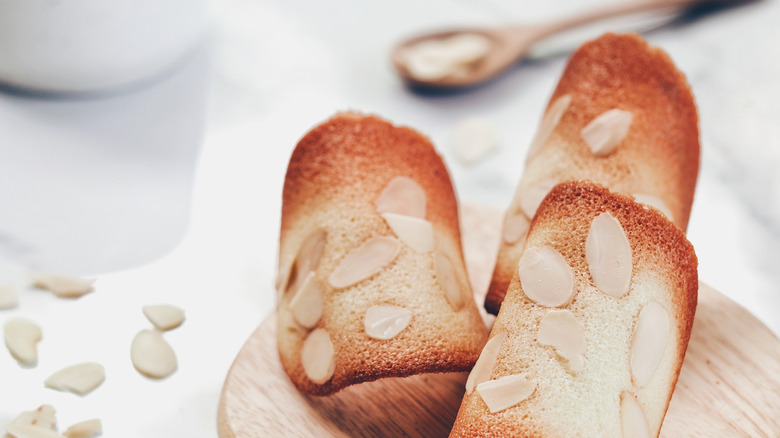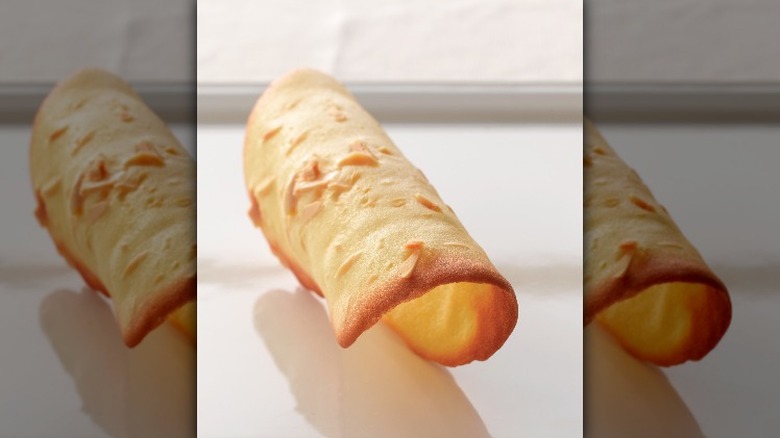What Makes Tuile Cookies Unique?
French culinary stylings have provided the namesake for some of the most enduring creations in the gastronomic world. Take, for instance, the French 75 cocktail or the historic staple French bread. While the latter is an understated classic and the former is essentially an elevated jungle juice, French desserts often weigh proportionally in the opposite direction: They're as elaborate as a middle schooler's absentee excuse. Consider the French croquembouche, a conical cream puff tower stacked tall and drizzled with a fine layer of caramel sauce. And who could forget the Mille-Crepe, a cake made of crepes spread with filling and stacked on top of each other (over and over again) until it's as tall as a normal layer cake?
Today, we're deep-diving into another elaborate French confection that you might not have heard of. Introducing: tuile cookies. Their flavor is typically mild, light vanilla or almond, but they're sometimes infused with orange, cocoa, or espresso, according to Food Network. They can be enjoyed on their own, but the outlet suggests using tuile cookies as an added textural component to creamy sorbets, mousses, and ice creams. However, not everybody sings the praises of this French treat. Honest Cooking writes off the tuile cookie as a "worn out dessert garnish." So, what's all the talk about? And what makes tuile cookies unique?
Tuile cookies are fragile, crisp, and intricately shaped
Per Great British Chefs, tuiles are traditional French wafer cookies made from a simple combination of flour, egg whites, butter, and sugar. But, don't let the seemingly plain lineup of ingredients fool you. The uniqueness of the tuile cookie lies in its shape — and the technique bakers need to nail in order to make a successful batch. Tuile (pronounced "tweel") comes from the French word for "tile," MasterClass explains, as the rolled shape of the cookie invokes the classic curved tiles commonly used on rooftops in French architecture. Fittingly, tuile cookies are ultra-thin and rolled into delicate, crunchy tubes.
To make them, the cookie dough is rolled out into a thin sheet, baked, then shaped around a rolling pin while still warm and pliable to achieve the signature tube shape. In fact, the dough should be rolled out so thin before baking that it is nearly transparent, and the cookies only stay in the oven for four-five minutes, says King Arthur Baking. Tuiles can be molded into other shapes, as well, as simple as small bowls or elaborate as flowers. For different-sized tuile cookies, you can use a greased shot glass, wooden spoon handle, or wine bottle for the draping and rolling of your warm dough.
They can also be filled with mousse, berries, or pastry cream. (Feeling ambitious? Why not all three?) The scope of tuile cookies is as wide as a baker's imagination.

